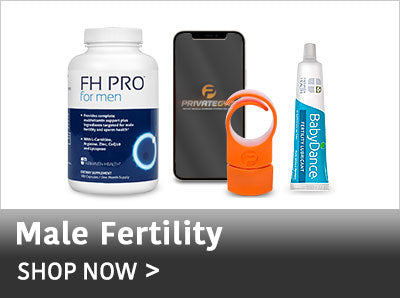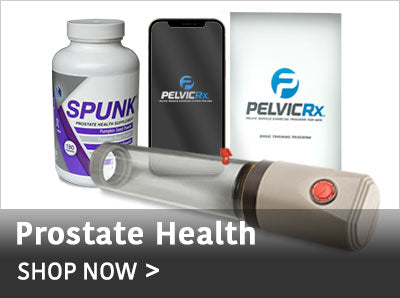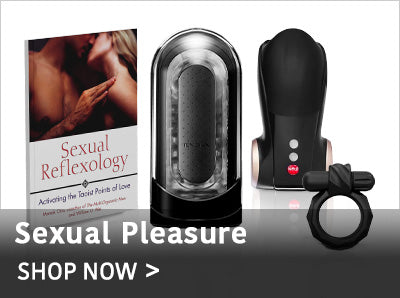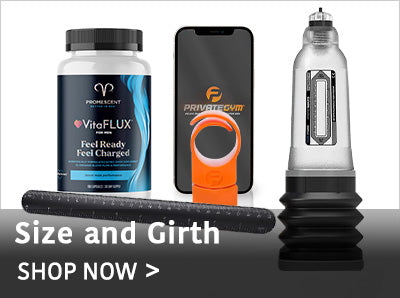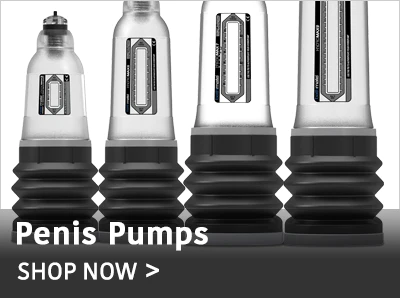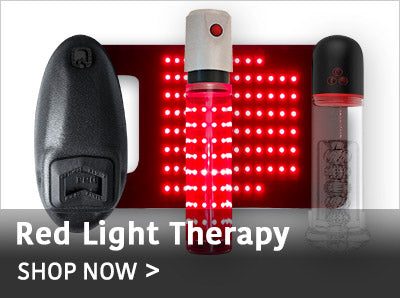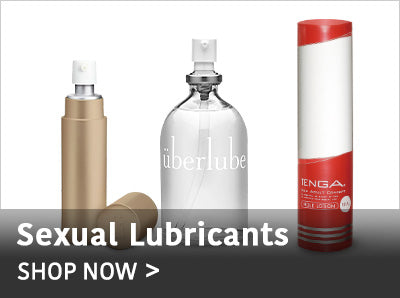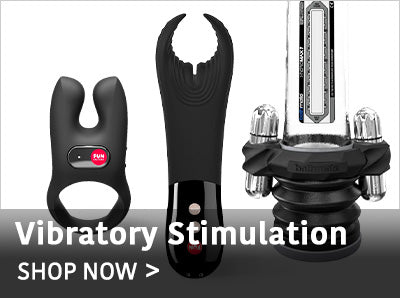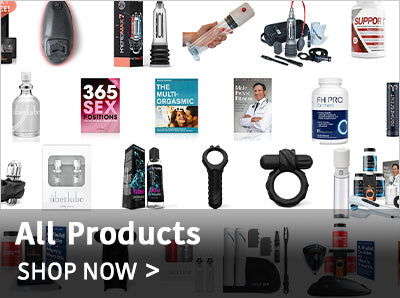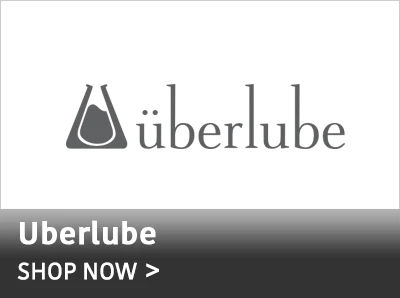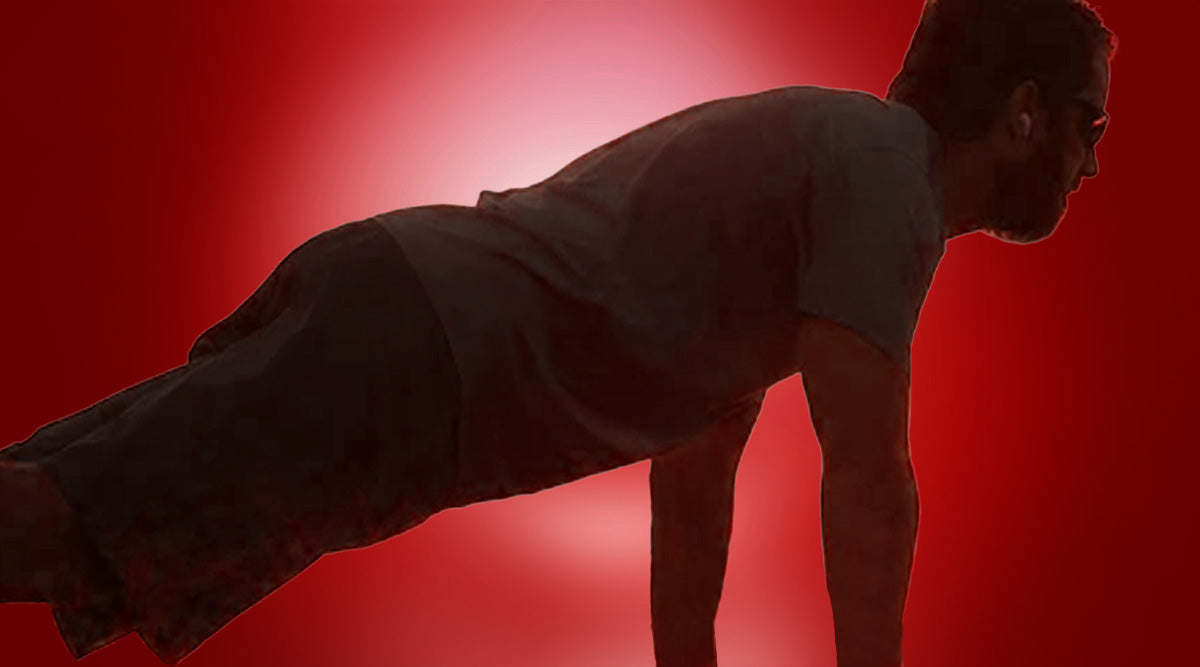How It Works Mobile
Health Benefits Mobile
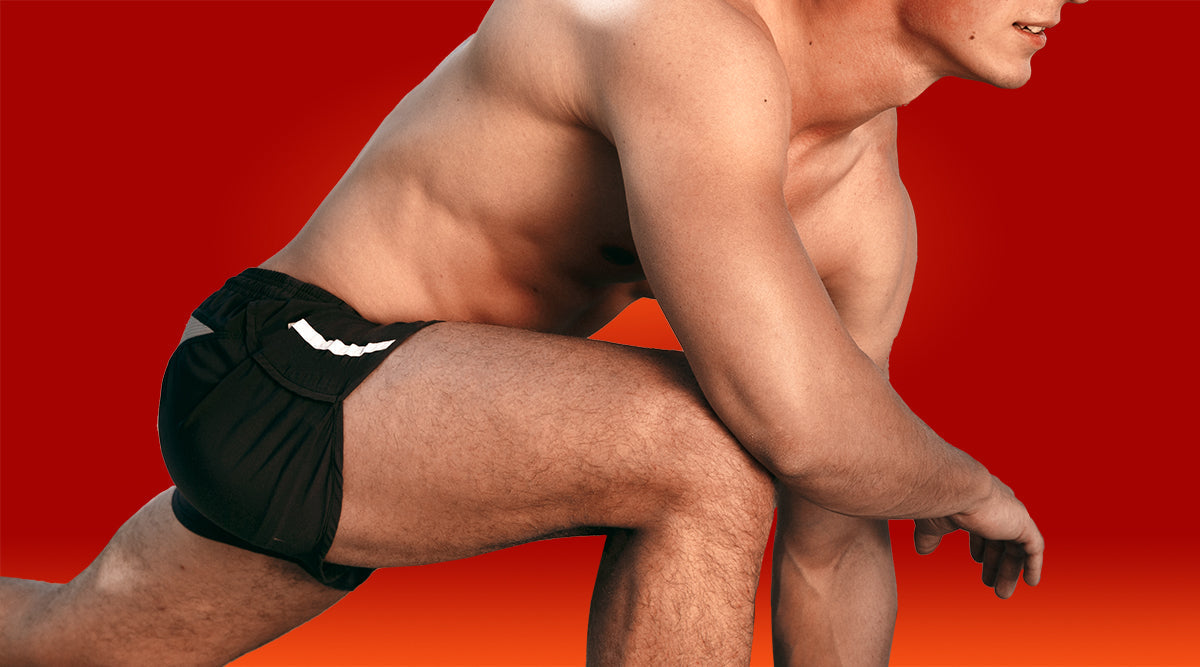
Red Light Therapy On Testicles - Does it Boost Testosterone Production?
Red Light Therapy On Testicles - Does it Boost Testosterone Production?
10 min read
10 min read
Red light therapy is gaining attention for its potential to boost testosterone when applied to the testicles. Here’s what the science says, how it works, and whether it can make a real difference.

Science-based guidance to improve your sexual health & performance.
By The Private Gym Team
Table of Contents
- Why Are Testosterone Levels Important for Men?
- What is Red Light Therapy, and How Does it Work?
- How Is Red Light Therapy Used?
- Light Exposure: The Good and the Bad
- The Effects of Sunlight on Testosterone Levels
- Is There Scientific Research on Red Light Therapy Devices?
- How to Use Red Light Therapy for the Testicles
- Red Light Therapy Improves Male Fertility
- Choosing a Safe Red Light Therapy to Raise Testosterone Levels Naturally
- How to Apply Red Light Therapy to the Testicles
Most guys know that testosterone is a crucial hormone that contributes to sex drive, energy, and sperm production and is the primary sex hormone in males. Therefore, maintaining healthy testosterone levels is essential for sexual health and performance.
This is especially true if you are over 30 because, on average, testosterone drops by 1-2% per year starting around that age. And once your testosterone levels drop below a critical level, you notice the negative effects on your mind, body, and sex drive.
Why Are Testosterone Levels Important for Men?
Let's be specific - healthy testosterone levels are necessary for the following functions in the body:
-
The development of the penis and testes
-
The deepening of the voice during puberty
-
Bone growth and strength
-
The appearance of facial and pubic hair (beginning at puberty)
-
Muscle size and strength
-
Sperm production
-
Sex drive (also known as libido)
Yes, this is important stuff! In adult men, when your testosterone levels are healthy, we enjoy many benefits:
-
Increased muscle mass
-
Improved strength
-
Lowering excess body fat
-
Increased focus
-
Improved mood
Of course, the reverse is true when testosterone levels are too low. So, understandably, helping boost testosterone levels into the healthy range is at the heart of many of our programs. Therefore, we always look for better ways to combat low testosterone.
That's why reports of how some men were using red light therapy to treat low testosterone caught our attention. Naturally, we had to investigate further!
What is Red Light Therapy, and How Does it Work?
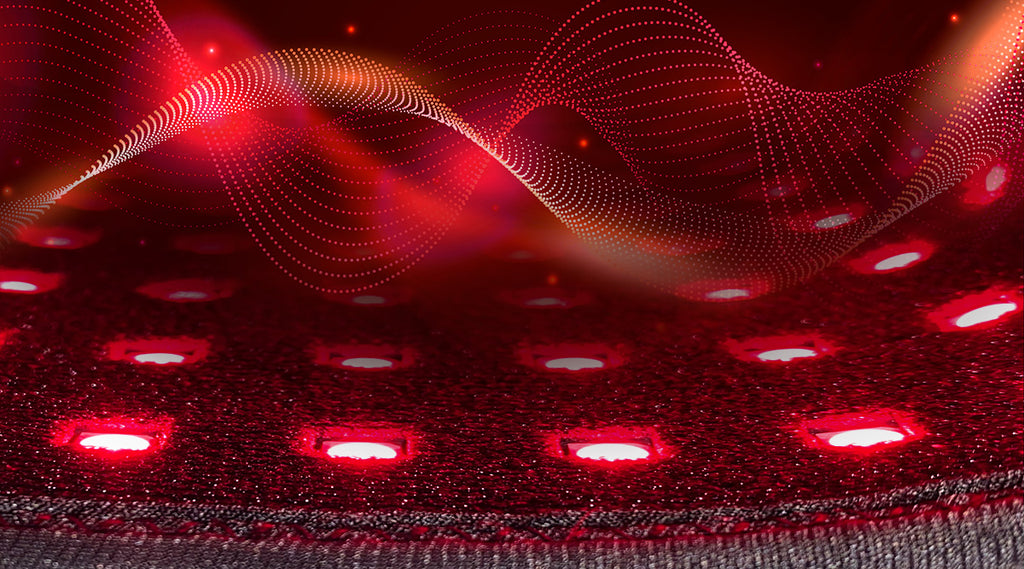
First, here’s a quick explainer: Red and near-infrared light therapy uses light to treat the skin, muscle tissue, and other exposed body parts to enhance cellular activity. Also known as low-level laser therapy, photobiomodulation, and low-power laser therapy, the treatment delivers energy to the body that your cells crave.
By exposing the skin to this particular light, the part of the cells that are “power generators” (the mitochondria) soak it up and produce more energy. Critically, unlike UV light, red and near-infrared light do not heat or burn the skin.
Moreover, red and near-infrared light therapy can also help the body fight oxidative stress, an imbalance between the body’s antioxidant and free radical compounds. It may also lower inflammatory responses within the cells.
Fortunately, red and near-infrared lights don’t require complicated equipment, meaning you can apply this therapy in the privacy of your own home.
Let’s examine red and near-infrared light therapy’s various applications and benefits.

Optimus Red Pump Wrap
Cutting-edge red light therapy wrap designed to boost blood flow, enhance erection quality, and optimize male performance.

Optimus Red 2 Groin Cup
Next-generation red light therapy groin cup designed to enhance circulation, support testosterone, and optimize male vitality.

Triple-Action Enhancer
Three-way device combining red light therapy, vibration, and vacuum pumping to boost blood flow, erection quality, and performance.
How Is Red Light Therapy Used?
Most commonly, people use red light therapy to benefit the skin. Specific benefits include:
-
Improved healing of wounds
-
Reducing stretch marks
-
Reducing wrinkles, fine lines, and age spots
-
Improving facial texture
-
Improving psoriasis, rosacea, and eczema
-
Healing scars
-
Healing sun-damaged skin
-
Helping hair growth in people with androgenic alopecia
-
Healing acne for smoother skin
-
Stimulation of collagen production, which gives skin its structure, strength, and elasticity
-
Increasing fibroblast production
-
Increasing blood circulation to tissues
-
Reducing inflammation in skin cells
Quite a list, but that's not all. Other potential medical uses that the medical community has investigated include:
-
Improving side effects from chemotherapy
-
Pain and inflammation relief associated with ankle tendonitis, carpal tunnel syndrome, rheumatoid arthritis, and osteoarthritis of the knee
-
Cold sore prevention
-
Dementia
-
Dental pain
-
Hair loss
-
Anxiety
-
Low back pain
-
Seasonal Affective Disorder
The bottom line is that red light therapy can benefit many bodily functions when applied in the correct doses!
Light Exposure: The Good and the Bad
Red light, the kind we like, comes from various natural and artificial sources. These include:
-
Sunlight (with usually positive effects)
-
Most home or work lights (with potentially harmful effects)
-
Street lights (also with potentially harmful effects)
But you should exercise caution when exposed to the above light sources, as they may contain harmful wavelengths, including UV and blue light, which scientists have found to have adverse effects on the body, especially when viewed close to your regular bedtime.
Additionally, some light sources result in too much heat. Applying any light, no matter how potentially beneficial, can simultaneously cancel the positive effects if the wrong light source is selected.
Use Caution with Blue & UV Light
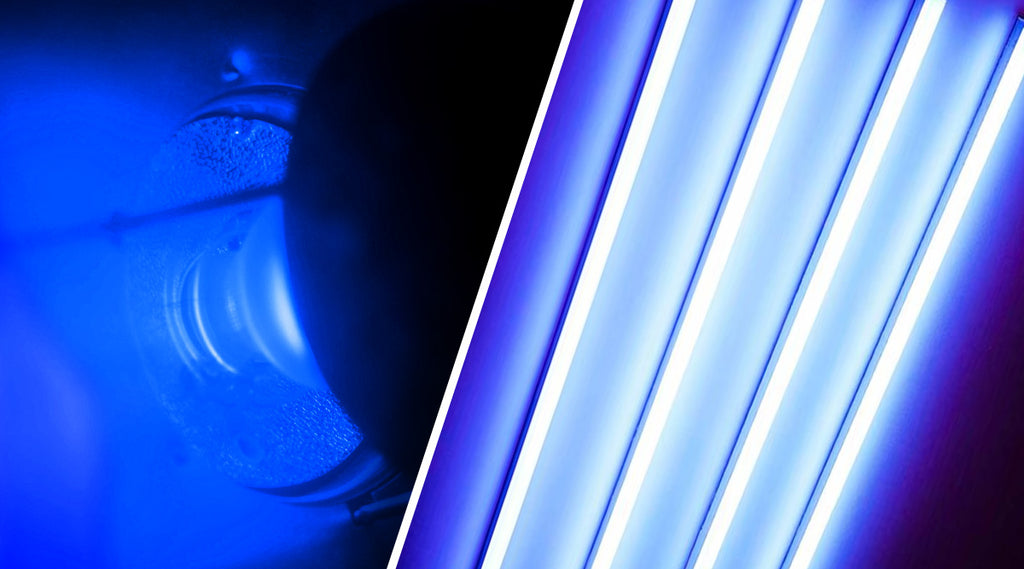
As we said, not all light sources are created equal. For example, metabolically speaking, blue light has different effects than red light: While red light enhances cellular energy production, blue light can have more complex and less beneficial impacts.
Excessive exposure to blue light, especially at shorter wavelengths, can induce cellular oxidative stress. This oxidative stress can interfere with mitochondrial function, affecting ATP production and overall cellular metabolism.
While blue light is effective against certain bacteria associated with acne, its impact on cellular metabolism is not entirely beneficial. Prolonged exposure to blue light, particularly at high intensities, may contribute to oxidative stress. This stress could disrupt normal cellular functions and may influence conditions like diabetes and other metabolic disorders.
The Effects of Sunlight on Testosterone Levels
Let's also review the effect of natural sunlight on testosterone levels. Much research has demonstrated that sunlight in the right quantities and at the right time is highly beneficial. The benefits include:
-
Enhanced Vitamin D production
-
Improved mood
-
Increased energy metabolism
However, it's critical to be aware that too much exposure to sunlight can cause inflammation and damage in the form of sunburn or skin cancer. This risk is especially true in sensitive body areas with thin skin – like the testes.
Sunlight Exposure on the Testicles for Testosterone Production
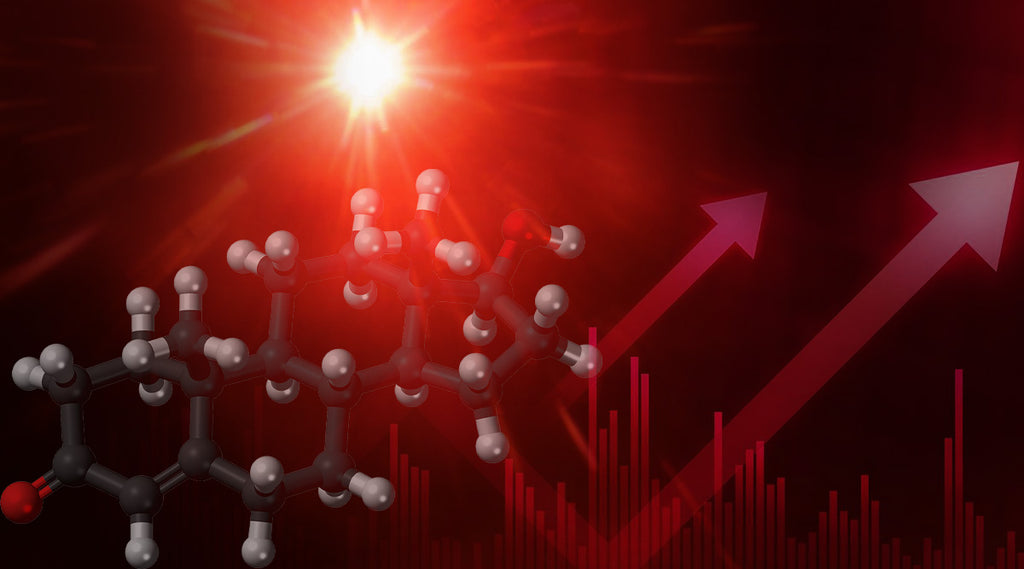
Many studies have shown that sunlight boosts testosterone in humans. For example, one study showed that bright light exposure to the torso and testes increased interest in sexual activity and raised testosterone levels anywhere from 25% to 200%.
Scientists discovered that natural light sources on the skin and body improve hormone levels, including increasing cellular energy production, reducing chronic inflammation, and improving blood circulation, which is crucial for male fertility and testosterone production. This effect includes:
-
Conversion of skin cholesterol into vitamin D3 sulfate
-
Improvement in oxidative metabolism
-
Improvement in ATP production
However, the direct correlation between sunlight exposure, specifically on the testicles, and significant increases in testosterone levels still requires further scientific study and validation.
What Is "Testicle Tanning," and Is It Safe?
"Testicle tanning" refers to the practice of exposing the testicles to sunlight to boost testosterone production. This method has gained popularity due to anecdotal reports and a handful of studies suggesting that sunlight exposure to the testicles can increase testosterone levels. However, as with other types of direct sunlight exposure, the risks can outweigh the benefits if not properly managed.
This is a crucial difference between natural sunlight and red or infrared light therapy. Since low-level light therapy is performed with light-emitting diodes (LEDs) in isolated, short amounts, the risk of sunburn or cancer is eliminated.
Is There Scientific Research on Red Light Therapy Devices?
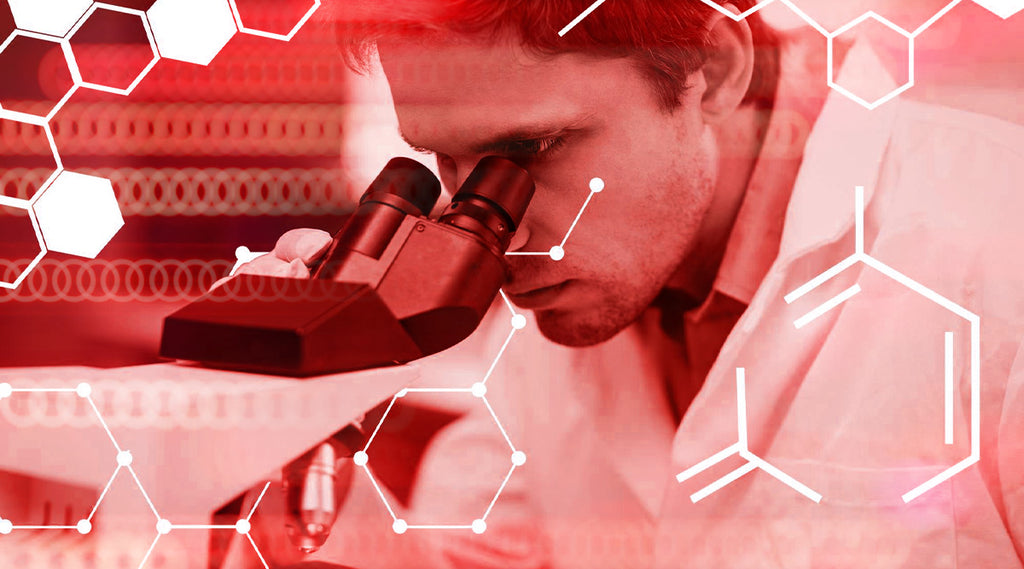
Fortunately, red light therapy is supported by a significant body of research.
Hungarian physician and professor Endre Mester performed some of the earliest studies in the sixties to show the benefits of red light therapy.
Thirty years later, the U.S. government conducted successful red light experiments at NASA for plant growth and pain treatment. Around the same time, the U.S. Navy SEALs experimented with red light therapy to help heal wounds efficiently and support regenerating damaged muscle tissues. And many other studies have been done since then to prove that red light therapy benefits health.
The treatment has come a long way since those early studies, and red light therapy is now widely used at home and in medical settings. However, it is still mainly used to treat skin conditions.
This application makes sense because most glands and organs are protected by inches of bone, fat, muscle, or skin, making direct light exposure challenging and largely unproductive.
However, there is one exception in men that serves an essential purpose!
How to Use Red Light Therapy for the Testicles
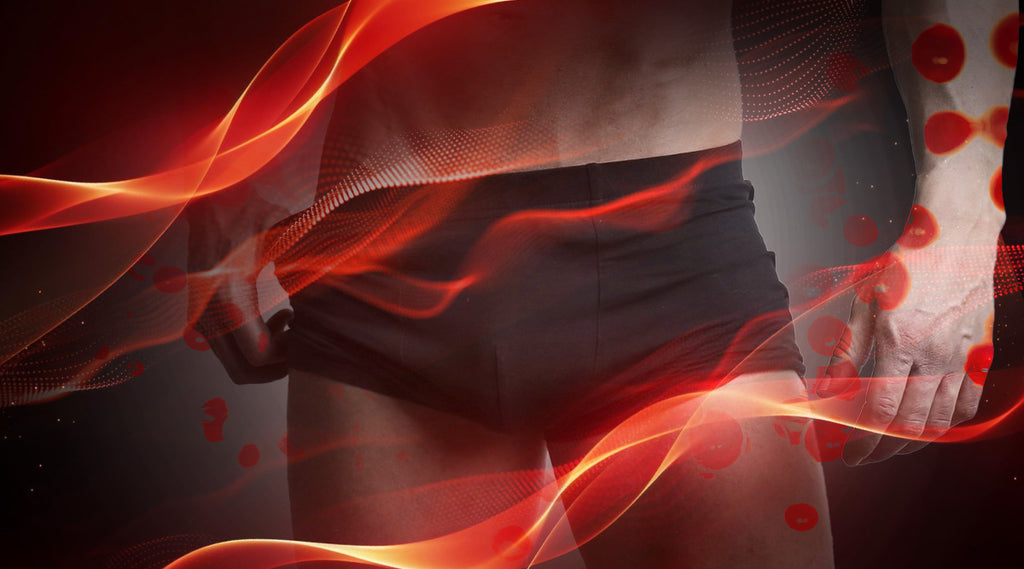
As we all know, male testicles are uniquely exposed. This anatomical reality is crucial in boosting testosterone levels naturally with red light therapy. In other words, because the testosterone-producing cells in the testicles are accessible outside the body cavities, they can be treated with red light, while other organs can't.
Why Does Red Light Therapy on the Testicles Work?
The male testes contain photoreceptive proteins called "opsin proteins." These photoreceptors activate with wavelengths of light. This effect is how red light therapy energizes the cells to enhance cellular function, including testosterone production.
Red Light Therapy to Boost Testosterone Levels in Animals
This was first demonstrated in animal studies where scientists used red light therapy to boost testosterone in male rats. In another study, scientists found that male birds and small mammals showed increased sexual activation due to red light therapy.
Red Light Therapy Improves Male Fertility
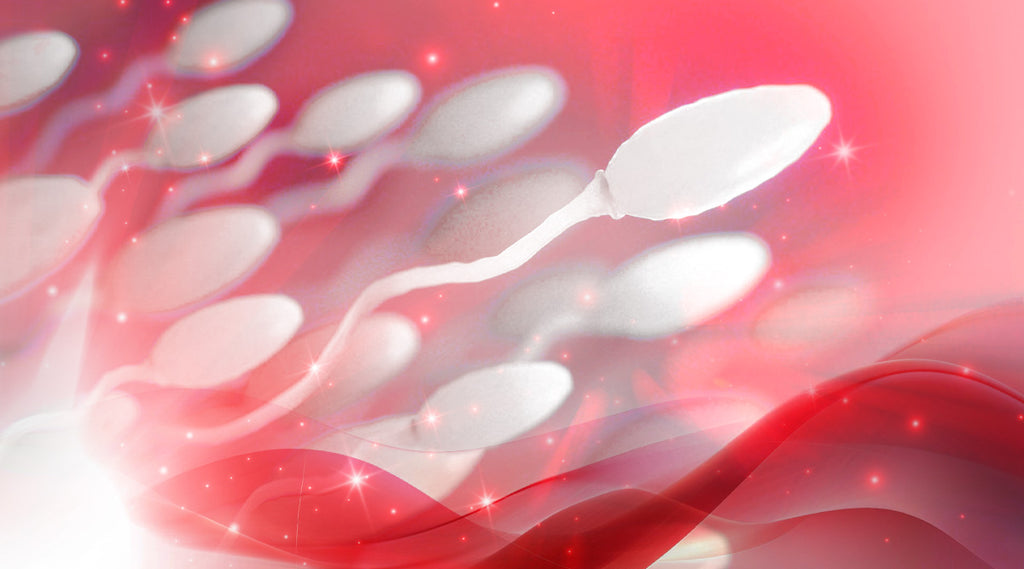
Mainstream science now recognizes red light therapy for its benefits in enhancing male fertility, primarily through improving sperm quality. High-quality sperm, characterized by good motility and viability, is essential for successful conception. This therapy has shown promising results in enhancing these crucial aspects of sperm, directly contributing to successful fertilization.
The Role of Red Light in Testosterone and Sperm Production
Sperm cells start their life in the testicles, where the biological process begins. For optimal sperm production, the testicles need to be healthy and functioning in an environment rich in androgens, especially testosterone. Red light therapy stimulates the testicles, enhancing local testosterone production, which is vital for the development of high-quality sperm and raising sperm counts.
Detailed Process of Sperm Development
Sperm production is a complex, multi-step process within the seminiferous tubules of the testes. During spermatogenesis—the process of sperm creation—sperm cells undergo several stages of cell division and maturation, finally emerging as mature sperm ready to fertilize an egg.
Enhancing Sperm Health with Red Light Therapy
Red light therapy contributes to this process by promoting ATP production. ATP, or adenosine triphosphate, is the cell's energy currency, crucial for all cellular functions, including human sperm motility. Increased ATP levels enhance sperm motility and overall fertility. Animal studies strongly demonstrate that red light therapy improves sperm count and motility, suggesting its potential benefits for human fertility.
Red Light Therapy for Treating Male Infertility and Low Testosterone Production
Furthermore, red light therapy is a non-invasive, drug-free treatment option for male infertility. It may counteract adverse effects on mitochondrial function caused by certain medications or lifestyle factors, such as SSRIs, prescription ED drugs, or alcohol, impairing the mitochondria's metabolic energy processes.
Furthermore, since red light therapy supports the quantity and quality of sperm, it also enhances the health of sperm cells post-ejaculation, as evidenced by improved outcomes from in vitro fertilization (IVF) studies involving mammalian and fish sperm.
How to Use Red Light Therapy for Treating Male Infertility
Red light therapy offers a promising option for improving male fertility through mechanisms that support both low sperm count and functionality of sperm. Its ability to increase sperm count and enhance motility makes it a valuable tool in treating infertility and improving reproductive health without the need for pharmaceuticals.
As research continues to evolve, the potential for red light therapy in clinical settings and home use becomes increasingly evident, providing hope for individuals facing fertility challenges.
Choosing a Safe Red Light Therapy to Raise Testosterone Levels Naturally

Optimus Red Stroker
Innovative red light therapy stroker designed to enhance pleasure, boost circulation, and support sexual wellness with every use.

Primal Cold JetPack
Advanced cold therapy designed to boost testosterone, enhance fertility, and revitalize sexual energy with targeted cooling power.

T-Booster Program
Scientifically designed program to boost testosterone quickly and naturally enhance male vitality and sexual performance.
The testicles extend out of the torso for temperature regulation. Biologically, testicles operate best at 95 degrees Fahrenheit (35 degrees Celsius). This difference is two full degrees below the average human body temperature.
You may see more damage than benefits if you use too much heat during therapy. Many types of bulbs and lamps utilized for light therapy give off too much heat to be safe for use on the testicles. These include:
-
Incandescents
-
Heat lamps
-
Infrared lamps at 1000nm+
When selecting lamps and bulbs for red light therapy, stick to LEDs. LEDs emit light while keeping things at a cool, optimal temperature.
The safest choices are red light sources that use wavelengths of red light from 630 to 660 nanometers (nm) and near-infrared (NIR), which ranges from 810 to 850 nm.
How to Apply Red Light Therapy to the Testicles
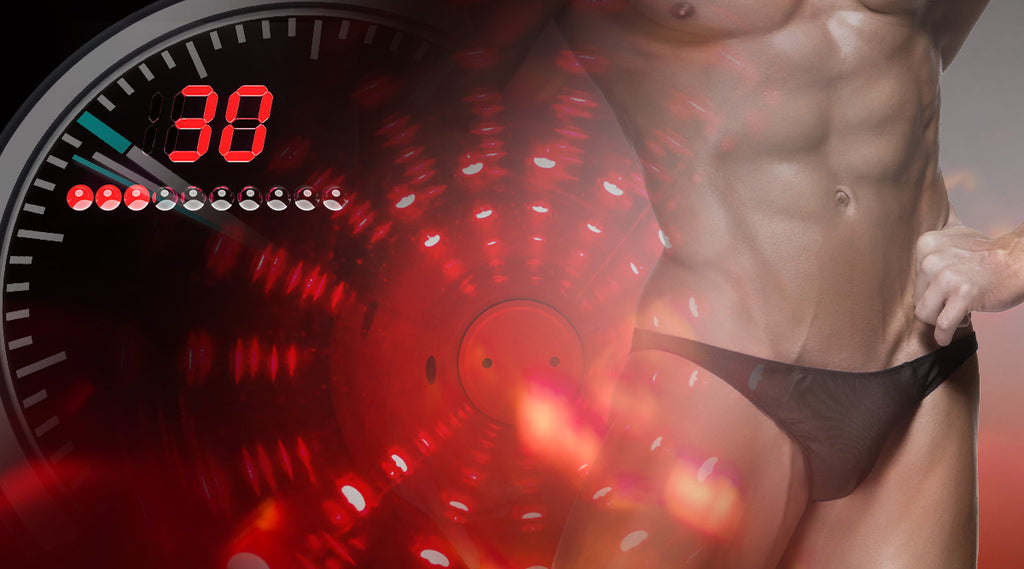
Red light treatments should last under 30 minutes daily and be consistently applied over several weeks or months, depending on your body's reaction to the therapy.
Though some people see doctors for red light therapy, home light therapy devices are becoming increasingly common. For the ideal effect, apply for 5-20 minutes. However, be patient with the results—consistency and patience are essential. It may take a few weeks before you feel any different.
Red Light Therapy Is Safe for Long-Term Use
If you use the correct source, red light therapy is safe for long-term use. You can also feel comfortable continuing the treatments multiple times weekly to encourage optimal cellular function.
If you hope to receive cellular energy or spermatogenesis benefits, getting light penetration deep into your testicles is crucial. This requirement is because you can absorb red light in the tissues beneath the skin. This absorption will directly affect the Leydig cells and the seminiferous tubules.
You Can Use Red Light Therapy on the Adrenal Glands
A quick side note about testosterone production elsewhere in the body: Since small amounts of male testosterone are produced outside the Leydig cells in the adrenal glands, treating these areas with red wavelengths is also beneficial.
Locate the adrenals directly above the kidneys and apply red light to the lower back. This technique can further enhance testosterone production, but it is less effective than treating the testicles to produce testosterone.
Use Red Light Therapy to Increase Testosterone Production and Boost Sexual Performance
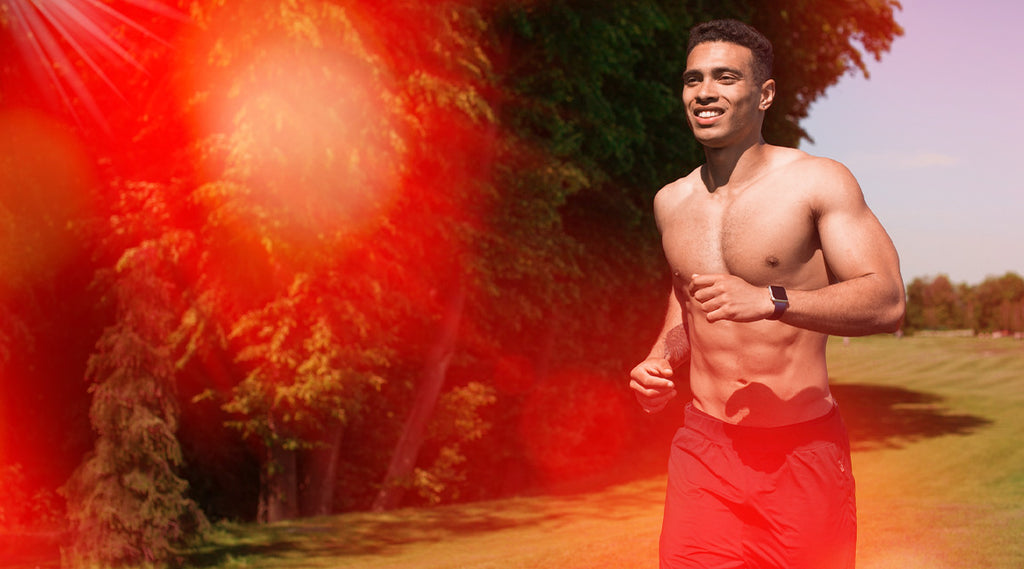
So that's it - you're now armed with the latest knowledge about red light therapy and how to use red light therapy for testosterone in the comfort of your own home.
Are you interested in taking control of your sexual health and testosterone levels without relying on pharmaceuticals? If so, red light therapy combined with the right lifestyle choices is an excellent solution!
RELATED ARTICLES
Recent Articles
- 12 Types of Female Orgasms: How to Help Her Experience Each One
- Why I Recommend You Get a Tantric Couch
- The Downsides of Penis Enlargement Surgery: Risks and Alternatives
- Bathmate vs. Air Pumps
- Bathmate Results: Penis Pump Before & After
- Side Effects of Catuaba
- Health Benefits of Catuaba
- 12 Essential Tips for a Healthy Penis
- Can Quadriplegic Men Have Sex?
- Sexual Function for Men After Spinal Cord Injury







